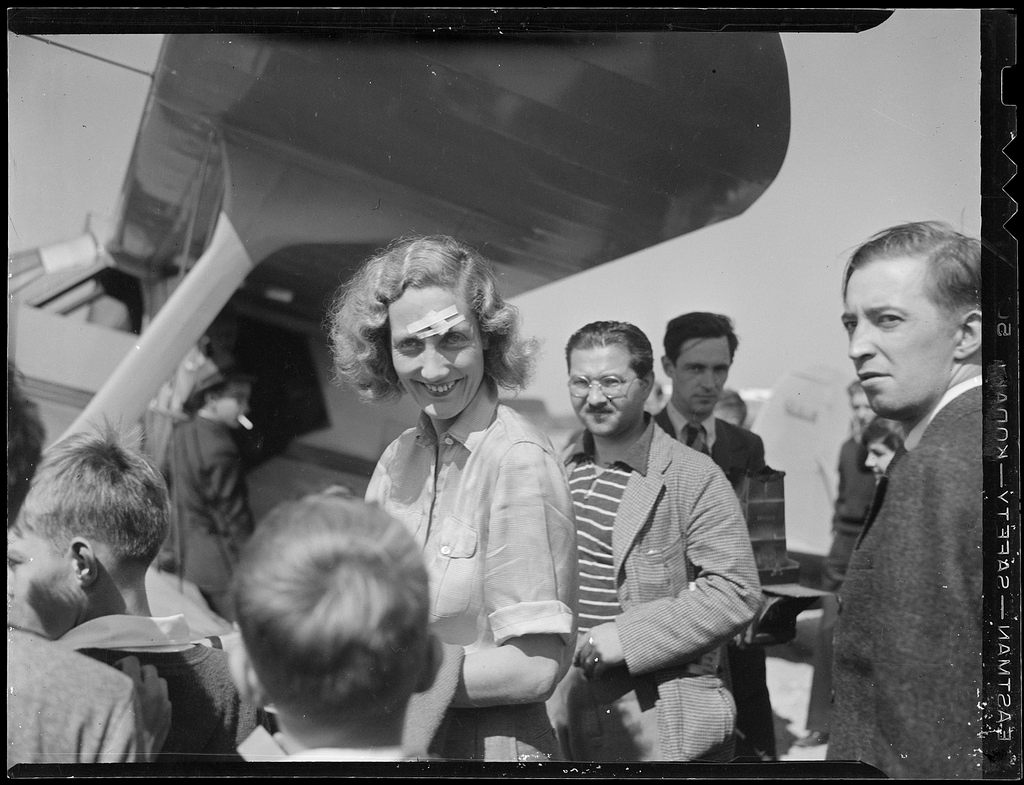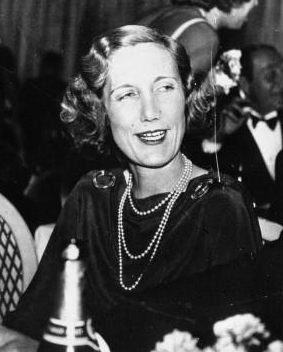The Early Female Aviator Who Flew Across the Atlantic in Terrible Weather
 Beryl Markham in New York, after flying across the Atlantic. (Photo: Courtesy of the Trustees of the Boston Public Library/ Leslie Jones Collection)
Beryl Markham in New York, after flying across the Atlantic. (Photo: Courtesy of the Trustees of the Boston Public Library/ Leslie Jones Collection)
This is the fourth part in a five-part series about early female explorers. Previous installments can be found here.
Growing up in Kenya, then a part of British East Africa, aviator Beryl Markham’s life was one of firsts. At age 18, she was the first woman in Africa to get a racehorse trainer’s license. At 29, she became Africa’s first female professional pilot, and five years later, on September 4, 1936, she broke the world record as the first woman to fly solo across the Atlantic from east to west.
Born in 1902, Markham grew up in a bush hut in the Kenyan highlands while her pioneer father struggled to build a successful farm after her mother went back to England—an intense occupation for anyone, let alone a retired army general-turned-horse trainer with no real farming experience. With little spare time to spend with his young daughter, Beryl had little formal education and spent much of her childhood speaking Swahili, Nandi, and Masai, and learning to spear hunt with the local Nandi Murani tribe.
“I learned what every dreaming child needs to know—that no horizon is so far that you cannot get above it or beyond it,” she later wrote.
Following a disastrous drought, Markham’s father moved to Peru in 1919. Beryl stayed behind, wed a man twice her age, and started to train racehorses. She was no tomboy—six feet tall and innately glamorous, a contemporary described Markham as “a magnificent creature… like watching a beautiful golden lioness when she walked across the room.” She was known to use her femininity to her advantage, bewitching men so that they didn’t begrudge her intrusion into traditionally male métiers like horse-training and aviation.
Markham would have three marriages, all disastrous (each one of her husbands divorced her on the grounds of infidelity) and gave birth to a son in London when she was 27. Within weeks of this life event, she was having an affair with Prince Henry at Buckingham Palace. The Windsors were not amused, and the queen extended a £15,000 annuity on the condition that Beryl leave England at once. She accepted the terms, returned to East Africa, and left her son with her in-laws.
 (Photo: Tekniska Museet/Flickr)
(Photo: Tekniska Museet/Flickr)
Back in East Africa, Markham trained to become a pilot. This was the era of truly great aviators: just a few decades after the Wright brothers first took flight, and a time when to fly was to be guided only by the compass, the wind, and the stars. And Africa was still unchartered territory, with aviation maps that left much to be desired.
“You’d likely see that the bulk of the terrain you were about to fly over was bluntly marked ‘UNSURVEYED,’” Markham wrote, and so pilots wouldn’t know until the last minute whether they were about to land in mud, desert, or jungle.
As a commercial pilot, delivering mail and medicine to settlers in remote mining towns across East Africa, Beryl was very often her own aircraft engineer when things went wrong. Flying tens of thousands of miles, to Khartoum and Cairo, Tripoli and Tunis, Cagliari and Cannes, she had no beams or beacons, no radio, and rarely even the light of a village to guide her on those long night flights across the desert.
Five years after she got her pilot’s license, Beryl decided to fly solo from England to North America, becoming the first ever woman to fly this course alone. (Amelia Earhart, flying in 1932, was the first woman to cross the Atlantic by herself.) Flying across 2,000 miles of Atlantic Ocean, through wind and rain on a brutal September night, this was a truly dangerous mission—to misjudge course by a few degrees would see Beryl ending up dead in the water rather than arriving to the fanfare awaiting her in New York City.
Manhattan would have to wait. 21 hours in, Beryl’s fuel tank vents iced over, her engine died, and she had to make a terrifying crash landing in Nova Scotia. Her flight record for the journey jokingly read: ”Atlantic flight. Abingdon, England, to a nameless swamp—nonstop.”


(Photo: Agence de presse Meurisse (Public domain), via Wikimedia Commons; Courtesy Open Road Media)
Markham’s memoir, West with the Night, was published in 1942, at the height of World War II. Disappearing under a torrent of war news, the book about her harrowing flight across the Atlantic sold only modestly. At the time, she was living in the U.S. and writing short stories about growing up in East Africa and her romances for publications like Ladies’ Home Journal. These were later collected in the book, The Splendid Outcast.
In the early 1950s Beryl moved back to Kenya and made a name for herself as one of the continent’s most successful racehorse trainers. In her later years, she lived a very humble life in Nairobi; after decades spent on chasing excitement on all corners of the globe she had run out of money. “A life has to move or it stagnates,” she once wrote.
Markham’s literary output was all but forgotten until a California publisher reissued West with the Night in 1983, thanks to a complimentary albeit personally unflattering mention of it in a recently released collection of Ernest Hemingway’s letters:
“Did you read Beryl Markham’s book, West with the Night?” Hemingway wrote. “She has written so well, and marvelously well, that I was completely ashamed of myself as a writer. I felt that I was simply a carpenter with words, picking up whatever was furnished on the job and nailing them together and sometimes making an okay pig pen. But this girl, who is to my knowledge very unpleasant and we might even say a high-grade bitch, can write rings around all of us who consider ourselves as writers … it really is a bloody wonderful book.”
The book was re-released more than forty years after its initial publication date, this time to great fanfare, and became a surprise U.S. bestseller.
Three years later, Beryl Markham died in genteel squalor near the grounds of the Nairobi racecourse. She was still training racehorses at the age of 83.








Follow us on Twitter to get the latest on the world's hidden wonders.
Like us on Facebook to get the latest on the world's hidden wonders.
Follow us on Twitter Like us on Facebook